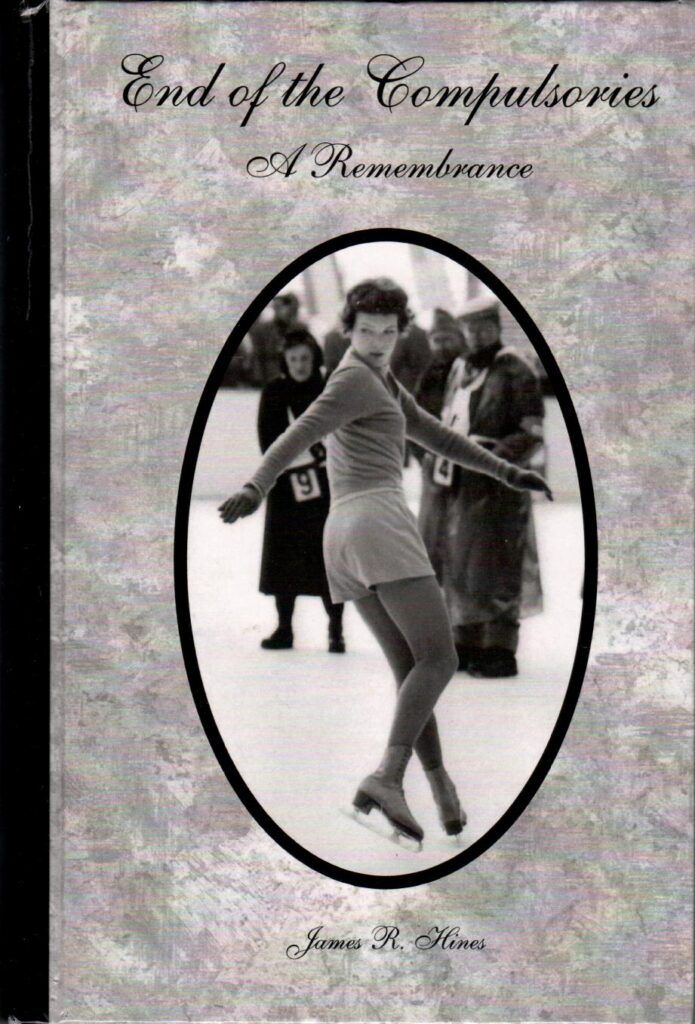James Hines, author of the great big skating history book, has come out with another book. This one is billed as focusing on figures and has been made much of by US Figure Skating: Sarah Brannen reviewed it on the USFSA site and the August 2022 issue of Skating mentioned it. It’s a self-published limited edition. I have copy 27 of 100.

Despite its billing, I didn’t think this book was primarily about figures. Part 1 is called “The Development of Figures: A Brief History,” but is really about the development of figure skating, not just figures. It summarizes the early literature on skating. In this literature, the word “figure” was not used as specifically as it is now. Figures were drawings on the ice, but also body positions and patterns made by the motions of people across the ice. A study of what “figure” meant over time and how it came refer specifically to tracings on the ice would be very interesting!
Part 2 is called “The ISU and the Compulsories.” It is roughly half about figures and half about pattern dance. I was excited to see tables of numbers showing how world champions placed in figures and free skating, both before and after the introduction of the short program.
Part 3 consists of three appendices: a schedule of compulsory figures that appears to be taken from an old skating book (it looks exactly like the one at the back of the second edition of T.D. Richardson’s Modern Figure Skating (London: Methuen, 1938), down to the font and pagebreaks, except that Richardson heads the factor column “Factor of Value Today.” and includes his proposed new values in another column), an Lynn Thomas published in Skating in May 1968 (the title is not given in the book, but I was able to dig it out of the online archive: it’s called “Who needs figures?”), and a list of pattern dances showing when each dance was invented and added to the schedule.
The book’s main strength is the amount of detail included. It is very precise, giving facts clearly and concisely. However, ensuring that so many precise details are also accurate requires extremely careful editing and proofreading. Unfortunately, the book has suffered in that regard. I noticed a number of typographical errors, including in the names of skaters. For example, Lily Cheetham’s last name is spelled “Cheatham” (p. 52) and Carl von Korper is called “Carl von Corper” (p. 59); Henry Crofton Lowther is called “Henry Cecil Lowther” repeatedly, but that seems to be a misidentification rather than a typo.
The book’s main weakness is one Hines has been criticized for before: lack of engagement with the secondary literature. The sources listed in End‘s bibliography are all either old handbooks on figure skating or popular histories by the likes of Dennis Bird, Nigel Brown and Ben Wright. Erica Rand and Cat Ariail both point to this in their reviews of Hines’s Figure Skating in the Formative Years. There is a very rich body of literature on sport history, especially women’s sport history; engagement with that body would add a lot to the study of compulsories.
Despite these flaws, I enjoyed reading the book and looking at the numerous illustrations. Its level of detail provides a good entry point for more analytical studies of figures and dance through history.

